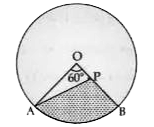Find the four numbers in A.P. such that the sum of 2ndand3rd terms is 22 and the product of 1stand4th terms is 85.Solution in Kannada
The correct Answer is:9,5
Step by step video, text & image solution for Find the four numbers in A.P. such that the sum of 2^(nd) and 3^(rd) terms is 22 and the product of 1^(st) and 4^(th) terms is 85. by Maths experts to help you in doubts & scoring excellent marks in Class 10 exams.
Updated on:21/07/2023Topper's Solved these Questions
- ARITHMETIC PROGRESSIONSBOOK - OSWAAL PUBLICATIONCHAPTER - ARITHMETIC PROGRESSIONSEXERCISE - LONG ANSWER TYPE QUESTIONS-II
13 Videos
- ARITHMETIC PROGRESSIONSBOOK - OSWAAL PUBLICATIONCHAPTER - ARITHMETIC PROGRESSIONSEXERCISE - TEXTBOOK CORNER EXERCISE 1.1
4 Videos
- ARITHMETIC PROGRESSIONSBOOK - OSWAAL PUBLICATIONCHAPTER - ARITHMETIC PROGRESSIONSEXERCISE - SHORT ANSWER TYPE QUESTION
15 Videos
- AREAS RELATED TO CIRCLES BOOK - OSWAAL PUBLICATIONCHAPTER - AREAS RELATED TO CIRCLES EXERCISE - LONG ANSWER TYPE QUESTIONS - I
20 Videos
- CIRCLES BOOK - OSWAAL PUBLICATIONCHAPTER - CIRCLES EXERCISE - TEXTBOOK CORNER (EXERCISE 4.2)
13 Videos
Similar Questions
The sum of four consecutive terms which are in an arithmetic progression is 32 and the ratio of the product of the first and the last term to the product to two middle terms is 7:15. Find the number.
View SolutionIn which of the following situations, does the list of numbers involved form an arithmetic progression, and why?
(i)The taxi fare after each km when the fare is Rs 15 for the first km and Rs 8 for additional km.
(ii) The amount of air present in a cylinder when a vacuum pump removes (14)th of the air remaining in the cylinder at a time.
(iii) The cost of digging a well, after every metre of digging, when it costs 150 for the first metre and rises by 50 for each subsequent metre.
(iv) The amount of money in the account every year, when 10000 is deposited at compound interest at 8 % per annum.
View SolutionHow many two digit numbers are divisible by 3?
View SolutionIn the given figure, AOB is a sector of angle 60∘ of a circle with centre O and radius 17 cm . If AP ⊥ OB and AP = 15 cm find the area of the shaded region.

View SolutionFrom a point Q ,the length of the tangent to a circle is 24 cm and the distacne to Q from the centre is 24.5 cm.The radius of the circle is
(a) 4.92 cm
(b)12 cm
©15 cm
(d)24.5 cm
View SolutionThe 1^(st),2^(nd) and 3^(rd) terms of an arithme tic series are a a and a^(2) where 'a' is negative.The 1^(st),2^(nd),3^(rd) terms of a geometric series are a,a^(2) and b find the value of a and b
View SolutionIf the coefficients of 2^(nd),3^(rd) and 4^( th ) terms in expansion of (1+x)^(n) are in A.P then value of n is
View SolutionIf sum of 3rdand8th terms of an A.P. is 7 and sum of 7thand14th terms is -3 then find 10th term.
View SolutionIf the sum of 12th and 22nd terms of an A.P is 100, then the sum of the first 33 terms of the A.P is
View SolutionIf the coefficient of the 2nd,3rd and 4th terms in the expansion of (1+x)n are in A.P, then n=
View SolutionThe 6th term of expansion [√2log10(10−3x)+5√2(x−2)log103]m is 21 and the coefficient of 2nd,3rdand4th terms of it are respectively 1st,3rdand5th term of an A.P. Find x.
View SolutionIf 1st term is 3, 2nd term is 6, 3rd term is 7, then find the 4th term.
View SolutionIf 1st term is 3,2nd term is 6,3rd term is 7, then let's find the 4th term.
View SolutionIn the expansion of (1+x)n, coefficients of 2nd 3rd and 4th terms are in A.P., then n=
View SolutionFive number are in A.P. with common difference ≠ 0. If the 1 st , 3 rd , and 4 th terms are in G.P. , then
View Solution
